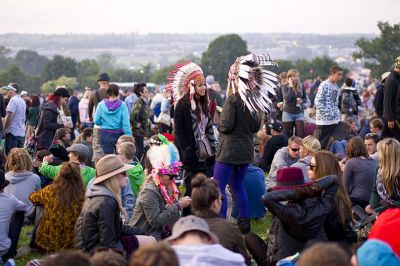
 Glastonbury Bans sale of Native American Headdresses
Glastonbury Bans sale of Native American Headdresses
Indie | Wednesday 15th October 2014 | Annalisa
Cultural appropriation has a history almost as long as the music industry itself, yet it is only recently that its implications are being more deeply scrutinised. The 'stealing' of another culture's aesthetic and style has always had its critics (see Gil Scott Heron's 'Aint No New Thing', 1972, for a particularly damning attack) but more recently an official backlash has begun. In July the Canadian 'Bass Coast' festival banned the wearing of Native American feathered headdresses and today Glastonbury followed suit after an online petition attracted 65 signatures.
The petition attacked the headdresses for perpetuating 'damaging, archaic and racist stereotypes', and, despite its few signatures, succeeded in reaching Emily Eavis at the top. While Glastonbury's organisers are yet to comment, the petition's leader Daniel Round expressed his hope that the decision would prompt 'positive discussions about the stereotyping of Native Americans and the headdress' in the UK and elsewhere.
The headdress has become a central issue in the fight against 'redface' stereotyping. This summer saw two high-profile successes: Pharrell Williams apologised for wearing a war bonnet on the cover of Elle magazine and the campaign to change the Washington Redskins football team's name and logo scored a victory.
As the organisers of Bass Coast explained, it's easy to see why festival-goers are attracted to headdresses – they have a magnificent aesthetic. However such supposedly meaningless fancy dress cannot be separated from its 'spiritual, cultural and aesthetic significance'.
Check this article for a more detailed explanation of the issue: http://nativeappropriations.com/2010/04/but-why-cant-i-wear-a-hipster-headdress.html
